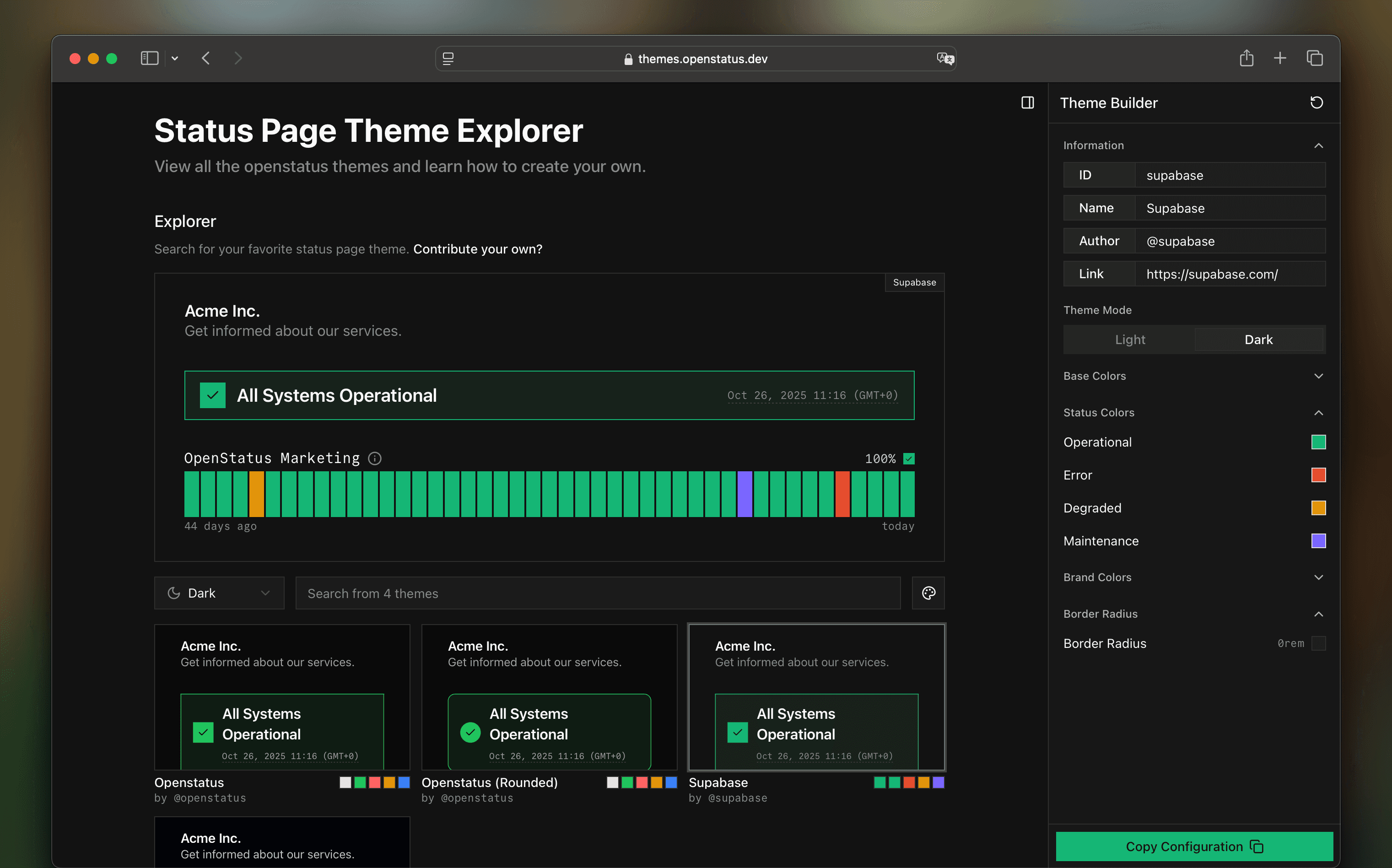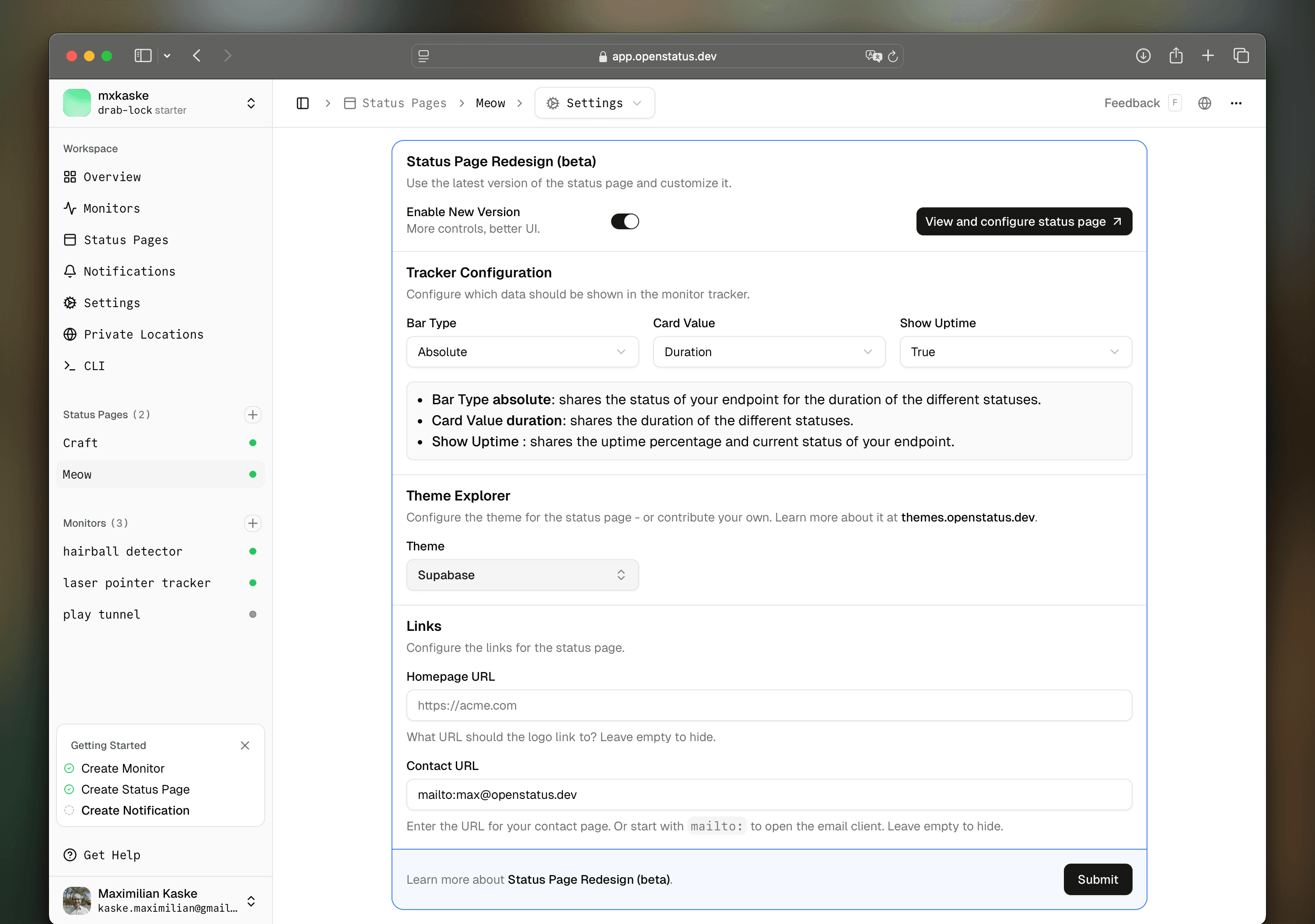Introducing: The Status Page Theme Explorer
Oct 28, 2025 | by Maximilian Kaske | [education]

Who uses status pages the most? Mainly Developers. And to match their nerdiness, we’re adding more font-mono into the game. We’ve collaborated with @aliszu to rebuilt our status page experience from the ground up and are providing you with more flexibility and control.
A status page should feel at home with your brand - without requiring constant maintenance. It should also let you decide exactly how much data you want to share and at what level of detail. The status-page is now a standalone app, fully separated from our main web project - continuing the great split after the dashboard extraction.
TL;DR: create your own theme on themes.openstatus.dev + more page configuration
Theme Explorer
From day one, we’ve built with shadcn/ui, and we’re sticking to it: same CSS variables, same philosophy. And luckily, it makes it easy to change themes!


We’ve now extended those variables with custom ones for states like maintenance, success, and degraded, among others.
We’re starting with four themes:
- our new default openstatus (Squared) theme,
- a legacy rounded theme close to the current one,
- a Supabase theme, and
- a GitHub high-contrast theme.
And here’s the fun part: you can contribute your own themes.
Go to themes.openstatus.dev, open the Theme Builder by toggling the sidebar (e.g. cmd + b) and play around with different styles.
Once you’re happy with your setup:
- Copy the configuration to your clipboard.
- Create a new theme file with that config.
- Append its ID to the
THEMES_LIST. - Open a PR to contribute it!
We have a comprehensive README with more context.
We’ve also updated the local seed setup — making it easier to get started and preview your theme right away at http://localhost:3000/status.
Note, that we won’t accept every submission. We want to keep themes high-quality and recognizable - no random or off-brand experiments (sorry Santa 🎅).
To try the new experience on your own status page, opt in to the redesign (beta) (Tutorial > How to configure a status page) and select your preferred theme. Newly created pages will automatically opt in to the new theme.
Shared Values Configuration
There’s more configuration.
We’ve heard from teams who wanted to manually update their status page without connecting any synthetic monitors. While we still believe monitoring + transparency go hand in hand, we don’t want to exclude users who just want to share updates directly.


With the new “manual” type, you can only share status reports you are creating, regardless of the derived synthetic monitoring values.
All metrics, including uptime, will refer to your shared (manual) data. To understand the underlying concept, check out our docs: Concepts > Status Values and Uptime Calculation - where we explain how these values are derived, including details about the default “absolute” type (which takes duration and request values to aggregate the uptime data).
We’re not done yet. Next up: grouped monitors, white-labeling support, and private themes - all coming to the new status page configuration soon.
Expect all status pages to be fully migrated to the new version early next year.
If you’re already using openstatus - or planning to - and feel a status page feature is missing, we’d love to hear from you. Contact us via ping@openstatus.dev or by joining Discord.